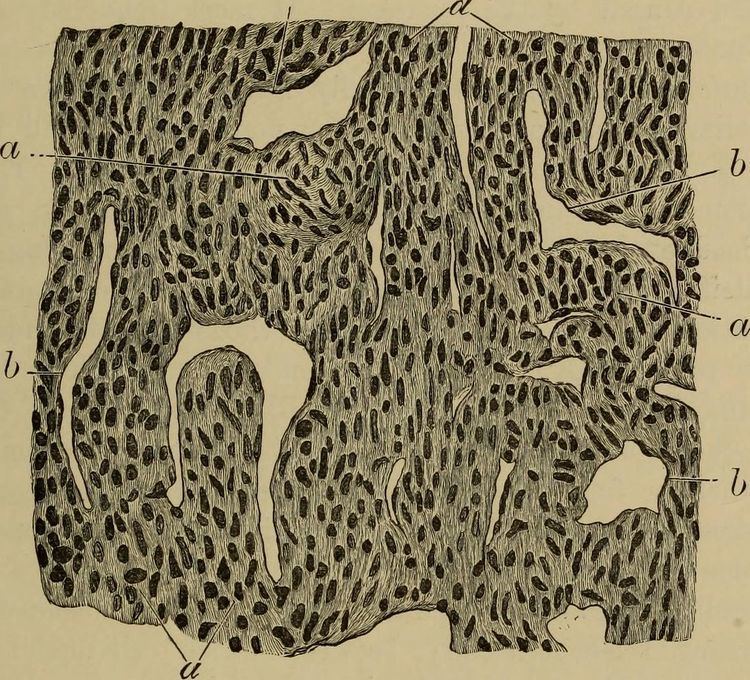 | ||
Spindle cell sarcoma is a type of connective tissue cancer in which the cells are spindle-shaped when examined under a microscope. The tumors generally begin in layers of connective tissue such as that under the skin, between muscles, and surrounding organs, and will generally start as a small lump with inflammation that grows. At first the lump will be self-contained as the tumor exists in its stage 1 state, and will not necessarily expand beyond its encapsulated form. However, it may develop cancerous processes that can only be detected through microscopic examination. As such, at this level the tumor is usually treated by excision that includes wide margins of healthy-looking tissue, followed by thorough biopsy and additional excision if necessary. The prognosis for a stage 1 tumor excision is usually fairly positive, but if the tumors progress to levels 2 and 3, prognosis is worse because tumor cells have likely spread to other locations. These locations can either be nearby tissues or system-wide locations that include the lungs, kidneys, and liver. In these cases prognosis is grim and chemotherapy and radiation are the only methods of controlling the cancer.
Spindle cell sarcoma can develop for a variety of reasons, including genetic predisposition but it also may be caused by a combination of other factors including injury and inflammation in patients that are already thought to be predisposed to such tumors. Spindle cells are a naturally occurring part of the body's response to injury. In response to an injury, infection, or other immune response the connective tissues will begin dividing to heal the affected area, and if the tissue is predisposed to spindle cell cancer the high cellular turnover may result in a few becoming cancerous and forming a tumor.
